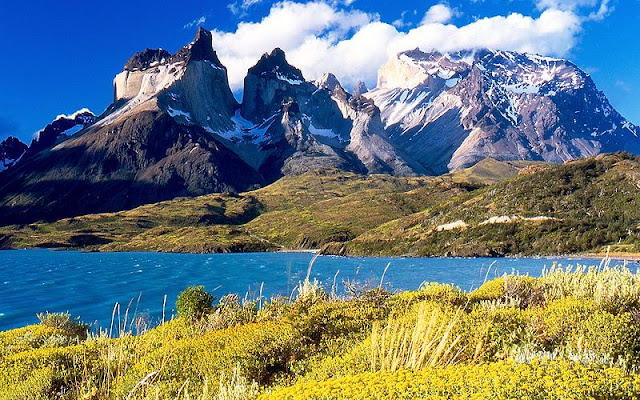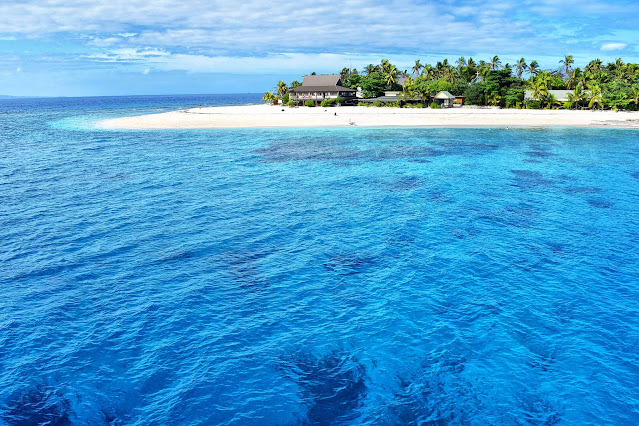Famous for its cultural heritage and charming hospitality, Dublin lies between Howth in the north and the headland of Dalkey to the south on a wide bay. The River Liffey, which flows into the harbor, slices the city in two. Several bridges span the north-south divide, the most famous of which is O'Connell Bridge. Any are a lovely place to stroll and take in the essence of the capital.
Pre-independence Dublin was once the second city of the British Empire, the graceful Georgian architecture and picturesque parks bearing testament to a troubled legacy. Ireland's capital has given the world such renowned literary figures as Yeats, Beckett, Joyce, Shaw, and Wilde. Dubbed a UNESCO City of Literature in 2010, Dublin's written tradition stretches back to AD 800 with The Book of Kells, now on permanent exhibition at Trinity College.
Although Dublin sprawls rather than soars, the city center is easily explored on foot, and a convenient transport network takes you wherever you wish to go. Find the best places to visit with our list of the top tourist attractions in Dublin.
1. Trinity College and College Green
rinity College is probably the best spot to kick off your Dublin tour. It's at the heart of the capital, packed full of incredible history, and it's the oldest university in Ireland having been founded in 1592 by Queen Elizabeth I.
Occupying an enviable 40-acre site, Trinity retains some of its ancient seclusion of cobbled squares, gardens, and parks and is famed throughout the world for its collection of great treasures. These include, on permanent exhibition, the 9th-century illuminated manuscript, the Book of Kells, the Books of Durrow and Armagh, and an ancient Irish harp. The priceless artifacts are displayed in the Treasury and the awe-inspiring 18th-century Long Room, which houses more than 200,000 of Trinity's oldest books and hosts regular literary exhibitions. Book the Early Access Book of Kells Tourto avoid the long lines. It also includes a trip to the exterior of Dublin Castle.
Trinity is a haven in an otherwise bustling area. Alumni over the centuries include such figures as Jonathan Swift (most famously known as the author of Gulliver's Travels), Oscar Wilde, Bram Stoker (author of Dracula), and playwright Samuel Beckett. Entering through a timber-tiled archway, you are instantly brought back in time. The immaculate green lawns, 18th- and 19th-century buildings, and cobbled pathway are reminiscent of a more gentile age and ooze a sense of hushed academia.
It's best to time your visit strategically, as buildings open to the public can become crowded during peak season. As well as taking in the must-see sights, do make time to relax and simply enjoy the atmosphere. Opposite the college on College Green is the old Irish Parliament building now a branch of the Bank of Ireland.
2. Grafton Street
A short southerly stroll from Trinity College takes you down towards Dublin's premier shopping location, Grafton Street. A statue of Molly Malone sits at the bottom of the street, so it's impossible to miss. This eclectic stretch buzzes morning, noon, and night and is a magnet for buskers, from classical quartets to traditional fiddle players and singer-songwriters. Many famed bands and musicians have given impromptu performances here, including Bono of U2.
Aside from buskers, you will find a broad range of boutiques, jewelers, and department stores, including upmarket Brown Thomas. Many would say that the jewel in the crown is Bewley's Oriental Café, a Dublin institution at this location since 1927. If you're on a shopping spree, it's well worth taking a slight diversion to the arty Powerscourt Townhouse Centre, with its designer shops and trendy places to eat.
3. St. Stephens Green
After eating your fill at Bewley's Oriental Café, an easy stroll to the top of Grafton Street brings you to Fusilier's Arch, the main entrance to St. Stephen's Green. Georgian buildings surround "the Green" (as it's known locally), although some sadly fell by the wayside during redevelopment, mainly in the 1960s, 70s, and 80s.
The 22-acre park is a Dublin treasure and an oasis of calm away from the hustle and bustle of downtown city life. When weather permits, you should do as the locals do and stretch out on the grass for some rest and relaxation, or grab a picnic lunch. Immaculate flowerbeds fringe the lawns. Also in the park is an ornate fountain at its center, a bridge over a duck pond, and a children's playground.
Incidentally, the park was the scene of bitter combat during the 1916 Uprising, however it was agreed by both sides that hostilities should cease while the park-keeper fed the ducks.
4. The Little Museum of Dublin
The Little Museum is a hidden gem tucked in a charming space amid all of the city's historical sights. A couple of minutes' stroll from Fusilier's Arch, at the top of Dawson Street, it is a must-see for those interested in how Dublin and its people lived their lives and evolved over the past century. James Joyce once famously said, "in the particular is contained the universal," which neatly sums up the ethos of this treasure trove. In the minutiae of people's belongings, history is indeed writ large.
Opened in 2011 following an appeal for mementos and artifacts, the museum has gone from strength to strength and now hosts an array of temporary exhibitions and events, as well as permanent installations, including a U2 retrospective with exhibits donated by band members. Other treats include the lectern used by John F. Kennedy when he addressed both houses of the Irish Parliament (Oireachtas) in June 1963.
5. Kildare Street Museums and Houses of Parliament
From the Little Museum of Dublin, a saunter past the legendary hotel The Shelbourne Dublinwill take you to the top of Kildare Street, home to the Irish Parliament (Dáil Éireann) on the left hand side. The parliament building was once known as Kildare House after James Fitzgerald, the Earl of Kildare, who commissioned its construction in 1745 and set out to create a grand Georgian mansion to reflect his lofty social status. When he became Duke of Leinster in 1766, the house was renamed Leinster House.
On the opposite side is a branch of the National Museum of Ireland (Archaeology), with outstanding permanent exhibitions including Ireland's Gold, Prehistoric Ireland, the Viking Collection, and the Treasury, including the magnificent Ardagh Chalice.
If you're interested in literature, you should visit the National Library close by, which has a permanent W.B. Yeats exhibition.
6. The National Gallery of Ireland
A right turn at the end of Kildare Street will bring you to the National Gallery of Ireland with entrances on Clare Street and Merrion Square West. Housing the finest collection of Irish art in the world alongside an outstanding collection of European art from the Middle Ages to the present day, this is a must-see while in the capital.
The gallery opened in 1864 with wings being added in 1903, 1968, and most recently, 2002. Collections include the Yeats Museum, seven rooms devoted to Irish art, Italian Painters, the Shaw Room, and Baroque Room. The gallery, which is spread over four levels, regularly hosts impressive temporary exhibitions, and there's an excellent café popular with locals and visitors alike.
7. Merrion Square
Exit the National Gallery's main portal, and you're on Merrion Square. Made up of stately private houses and offices, this is arguably Dublin's grandest Georgian square and stars in countless images and postcards of the city. At its center is a pretty park with a vibrant statue of that most colorful writer and renowned Dublin wit, Oscar Wilde.
An amiable stroll around the square is a journey back in time to the Georgian era. You may notice that the top windows in many buildings are smaller than those lower down. This was done in order to create an optical illusion of the houses being taller than they really are. At weekends, local artists line the perimeter of the park and display their paintings on the railings.
8. EPIC The Irish Emigration Museum
Ireland has long been an exporter of people. Scratch the surface of America's East Coast, and you'll find the influence of the Irish everywhere. Dublin's superb EPIC The Irish Emigration Museum is aptly situated in the city's docklands area, the scene of many a sad farewell.
Established in 2016, this fascinating museum offers an in-depth — and often moving — account of Irish emigration over the centuries. All told there are more than 20 separate themed galleries to explore, dealing not just with the history of Irish migration, but also the influence this dynamic people have had in the places they settled. If you've got the time, be sure to visit the Irish Family History Centre for tips and advice — along with resources — to track your family history.
A nearby related attraction is the Jeanie Johnston: An Irish Famine Story. The centerpiece of this excellent museum is an accurate replica of the fabled Jeanie Johnston, a sailing vessel from Canada that was built in 1847 and which transported untold numbers of Irish across the Atlantic.
9. GPO Witness History Museum
O'Connell Street, Dublin's main thoroughfare, is home to the iconic GPO (General Post Office) built in 1814. The failed 1916 Uprising began here, and bullet holes still dot the Neoclassical portico. Inside, the city's newest attraction, the GPO Witness History Museum, is a must-visit for those wanting to gain a better understanding of this pivotal event in Irish history.
While focusing predominantly on the period leading up to the uprising and the uprising itself, there's plenty of information on hand via interactive displays about other key events, including the Irish War of Independence right up to the Northern Ireland peace process. Guided tours are available, and come highly recommended.
10. National Museum of Ireland - Decorative Arts and History (Collins Barracks)
Originally an army barracks, the National Museum of Ireland - Decorative Arts and History opened in 1997. The collections include silver, ceramics, jewelry, furniture, Irish haute couture fashion, and exhibitions exploring Irish military history. There are several other permanent exhibitions, including a retrospective of modernist designer Eileen Gray; Irish Silver dating from the 17th to 20th centuries; Asian Art; Irish Country Furniture; and Soldiers and Chiefs, which displays historic military artifacts and uniforms.
Another branch of the National Museum of Ireland worth exploring, the Natural History Museum was established in 1856 and remains little changed since, a fact that has led to its being known as a "museum of a museum" (or, less flatteringly, the "Dead Zoo"). Highlights include exploring the museum's large collections of specimens from countless species, fossils, and dioramas... all for free.

















































